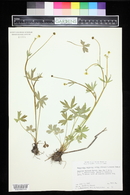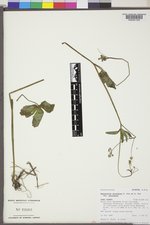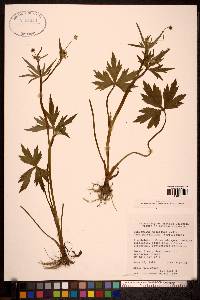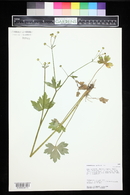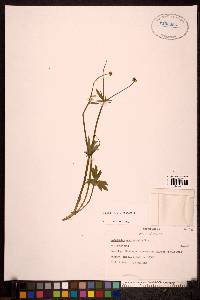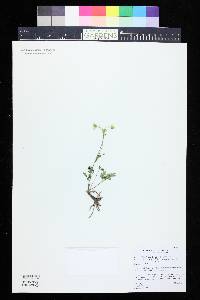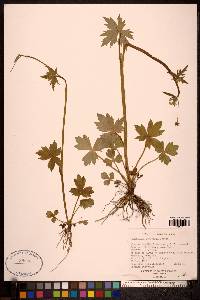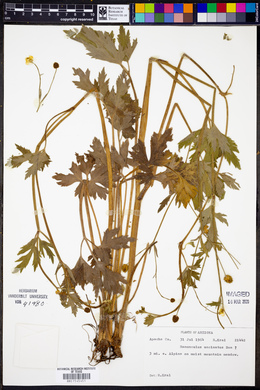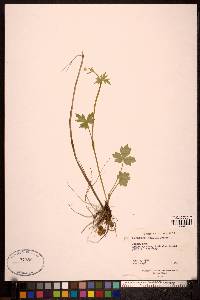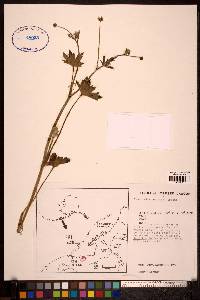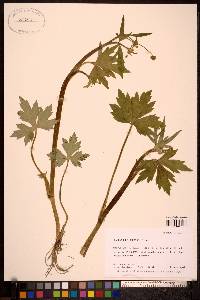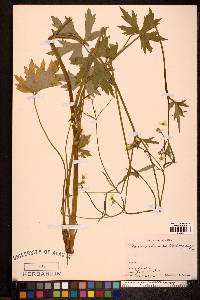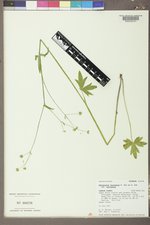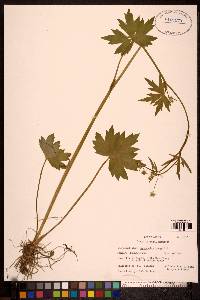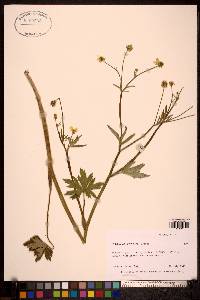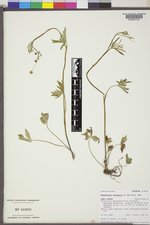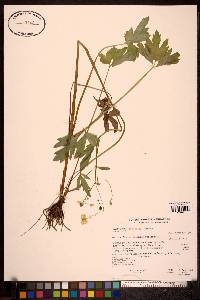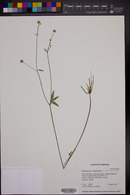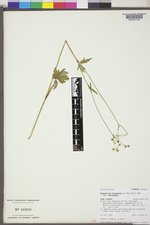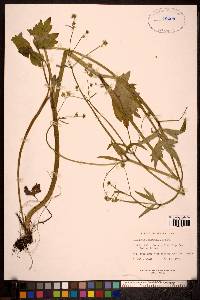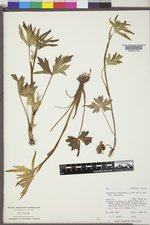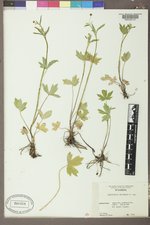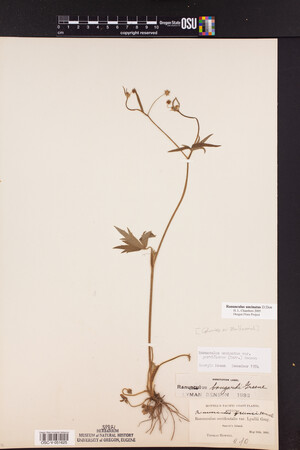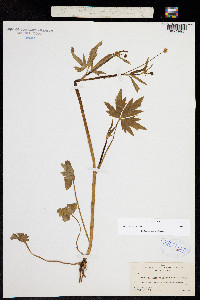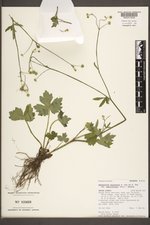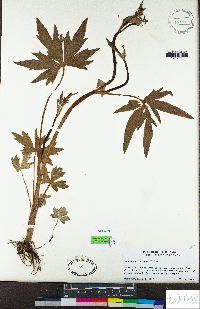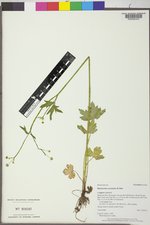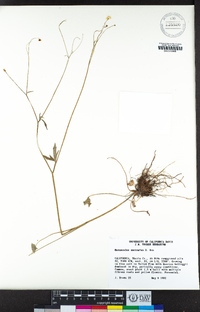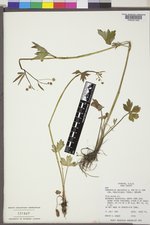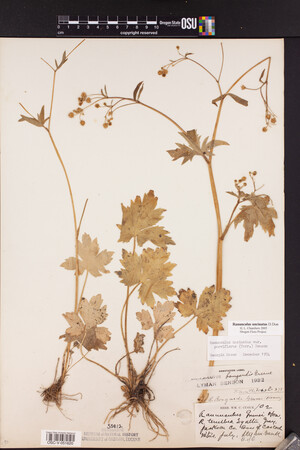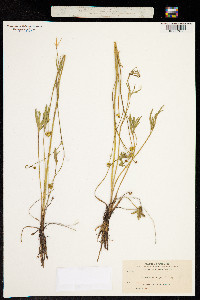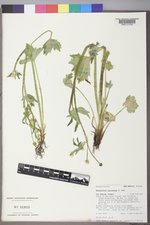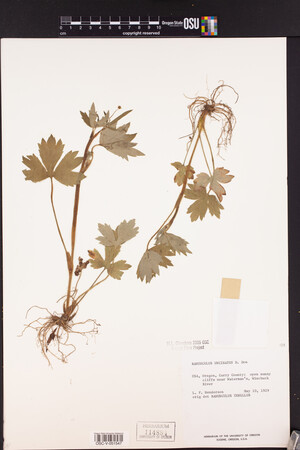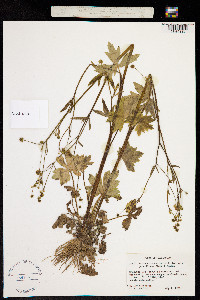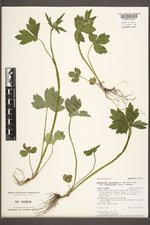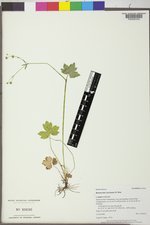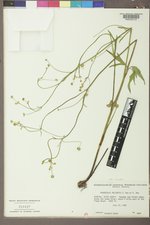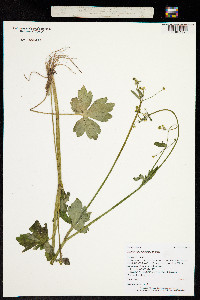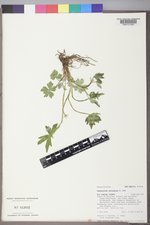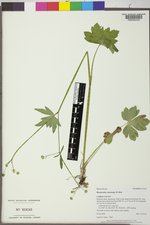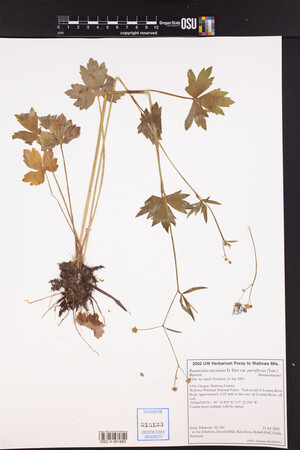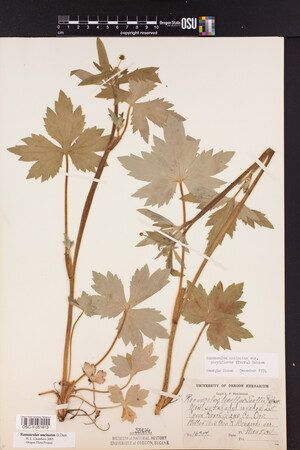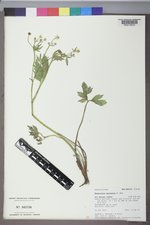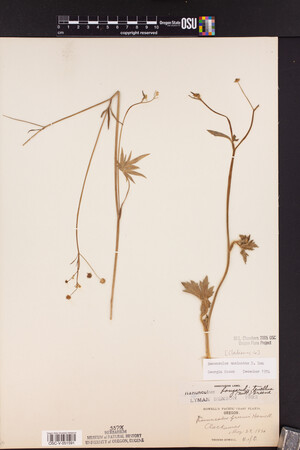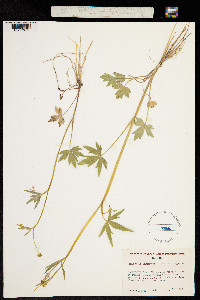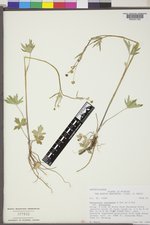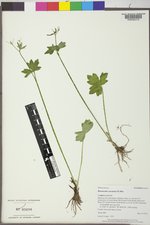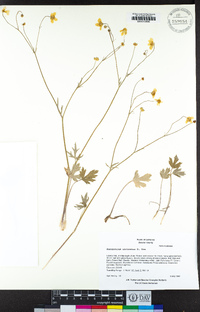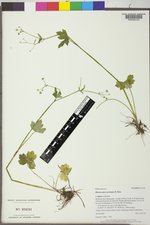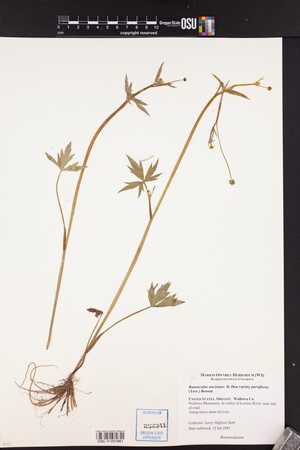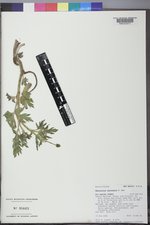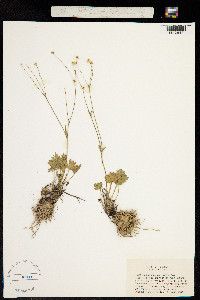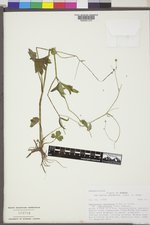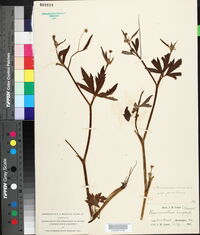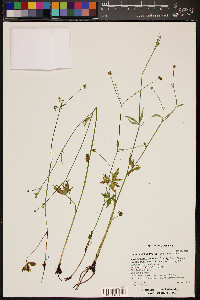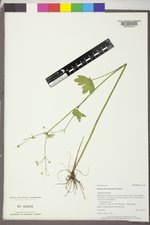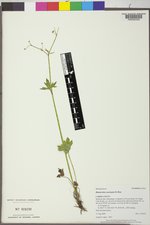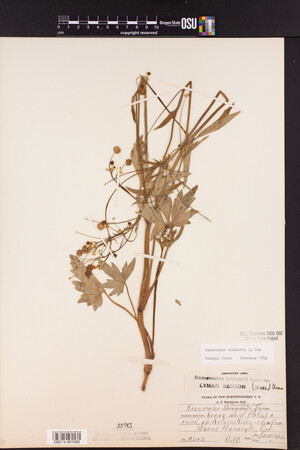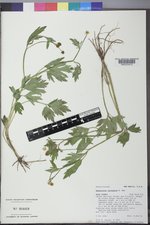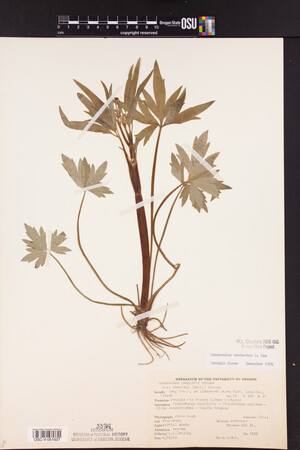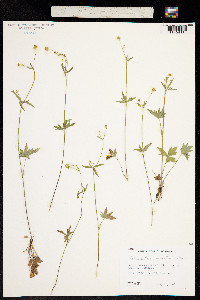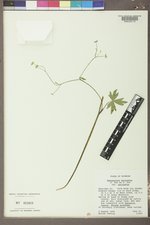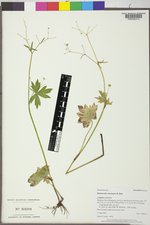Ranunculus uncinatus
|
|
|
|
Family: Ranunculaceae
Woodland Buttercup, more...hooked buttercup
|
Stems erect, never rooting nodally, hispid or glabrous, base not bulbous. Roots never tuberous. Basal leaf blades cordate to reniform in outline, 3-parted or sometimes 3-foliolate, 1.8-5.6 × 2.8-8.3 cm, segments again lobed, ultimate segments elliptic to lanceolate, margins toothed or crenate-toothed, apex acute to rounded-obtuse. Flowers: receptacle glabrous; sepals reflexed or sometimes spreading, 2-3.5 × 1-2 mm, pubescent; petals 5, yellow, 2-4(-6) × 1-2(-3) mm. Heads of achenes globose or hemispheric, 4-7 × 4-7 mm; achenes 2-2.8 × 1.6-2 mm, glabrous or sparsely hispid, margin forming narrow rib 0.1-0.2 mm wide; beak persistent, lanceolate, curved, hooked, 1.2-2.5 mm. 2 n = 28. Flowering spring-summer (Apr-Aug). Moist meadows or woods, often along streams; 0-3400 m; Alta., B.C.; Alaska, Ariz., Calif., Colo., Idaho, Mont., Nev., N.Mex., Oreg., Wash., Wyo. Plants with hispid stems and achenes are often separated as Ranunculus uncinatus var. parviflorus ; these two characters are poorly correlated, however, and sometimes vary between plants in a single collection. Ranunculus uncinatus was reported from northeastern Alberta and adjacent Northwest Territories by H. J. Scoggan (1978-1979, part 3). The specimens have hairy receptacles and straight, broad achene beaks; they apparently represent small individuals of R . macounii . Some Native Americans used Ranunculus uncinatus as an antrirheumatic, a diaphoretic, a disinfectant, and an orthopedic aid, as well as in herbal steam baths intended to soothe sore muscles and rheumatism (D. E. Moerman 1986).
FNA 1997, Martin and Hutchins 1980, Kearney and Peebles 1969 Duration: Perennial Nativity: Native Lifeform: Forb/Herb General: Annual or perennial with erect stems that never root nodally, herbage glabrous to sparsely hirsute. Leaves: Basal leaves cordate to reniform in outline, 3-parted to 3-foliolate, 1.8-5.6 cm long by 2.8-8 cm wide, segments again lobed, with ultimate segments elliptic to lanceolate, margins toothed or crenate-toothed, apex acute to rounded obtuse, cauline leaves sometimes larger than basal ones. Flowers: Glabrous receptacle with reflexed to sometimes spreading sepals, 2-3.5 mm long by 1-2 mm wide, yellowish green and pubescent, 5 yellow petals, 2-4 mm long by 1-2 mm wide. Fruits: Globose fruiting heads with 5-30 achenes per head, overall 4-7 mm, achenes each 2-3 mm by 1.5-2 mm, glabrous to sparsely hispid, with persistent, curved or hooked beak. Ecology: Found in moist soils, often in shaded areas along streams and in deep woods from 7,000-8,500 ft (2134-2591 m); flowers May-July. Notes: The hooked beak is distinctive. Ethnobotany: Used as a wash for stiff, sore muscles and rheumatism, as a disinfectant, but some consider the plant to be a skin irritant. Etymology: Ranunculus is from Latin rana, little frog, for the moist habit, while uncinatus means hooked at the end. Synonyms: None Editor: SBuckley, 2010 |

